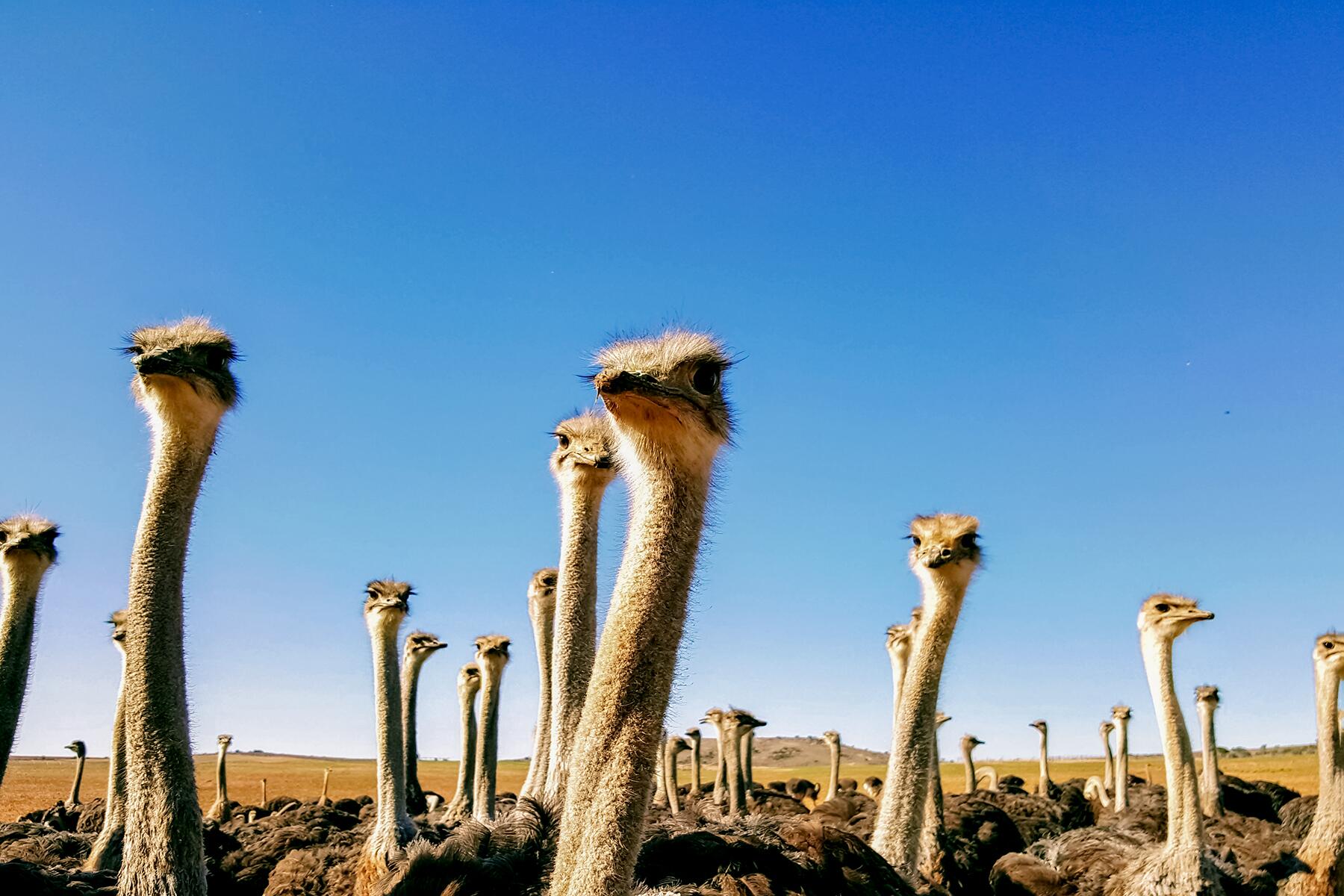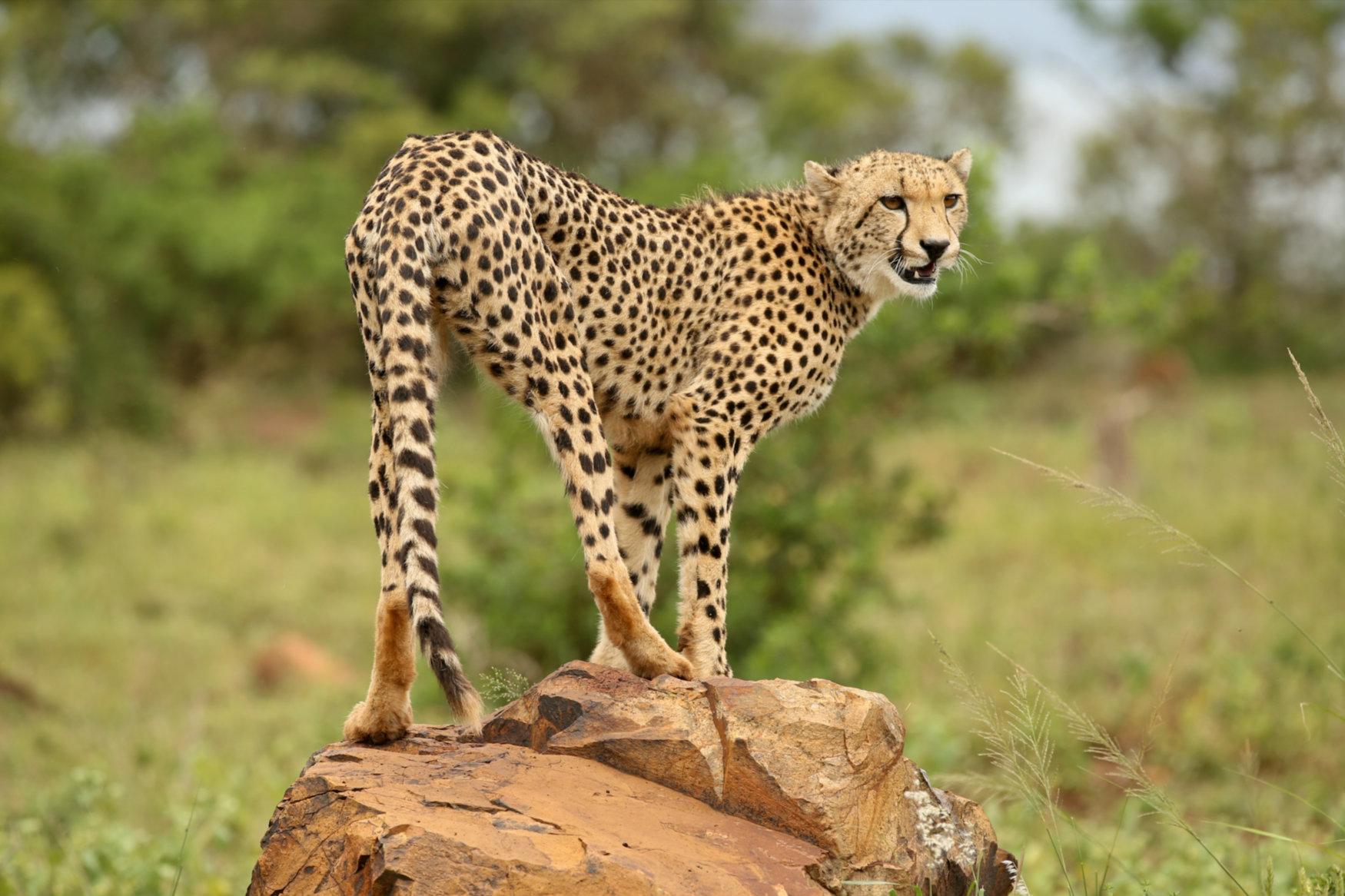The Western Cape and Winelands
The Western Cape and Winelands
Anchored by Cape Town in the southwest, the Western Cape is an alluring province, a sweep of endless mountain ranges, empty beaches, and European history dating back more than three centuries. The cultures of the indigenous Khoekhoen and San people—the first inhabitants of this enormous area—also contribute to the region's richness. You can reach most of the province's highlights in less than two hours from Cape Town, making the city an ideal base from which to explore.
The historic Winelands, in the city's backyard, produce fine wine amid the exquisite beauty of rocky mountains, serried vines, and elegant Cape Dutch estates. Here farms have been handed down from one generation to another for centuries, and old-name families like the Cloetes and Myburghs have become part of the fa...
Read MoreAnchored by Cape Town in the southwest, the Western Cape is an alluring province, a sweep of endless mountain ranges, empty beaches, and European history dating back more than three centuries. The cultures of the indigenous Khoekhoen and San people—the first inhabitants of this enormous area—also contribute to the region's richness. You can reach most of the province's highlights in less than two hours from Cape Town, making the city an ideal base from which to explore.
The historic Winelands, in the city's backyard, produce fine wine amid the exquisite beauty of rocky mountains, serried vines, and elegant Cape Dutch estates. Here farms have been handed down from one generation to another for centuries, and old-name families like the Cloetes and Myburghs have become part of the fabric of the region. Even first-time visitors may notice subtle differences between these Cape Afrikaners and their more conservative cousins in the hinterland. For the most part they are descendants of the landed gentry and educated classes who stayed in the Cape after the British takeover in 1806 and the emancipation of the slaves in 1834.
The region they stayed behind in was one truly blessed by nature. Wildflowers are one extraordinary element of this natural bounty. The Western Cape is famous for its fynbos (pronounced fane-boss), the hardy, thin-leaf vegetation that gives much of the province its distinctive look. Fynbos composes a major part of the Cape floral kingdom, the smallest and richest of the world's six floral kingdoms. More than 8,500 plant species are found in the province, of which 5,000 grow nowhere else on earth. The region is dotted with nature reserves where you can hike through this profusion of flora, admiring the majesty of the king protea or the shimmering leaves of the silver tree. When the wind blows and mist trails across the mountainsides, the fynbos-covered landscape takes on the look of a Scottish heath.
Not surprisingly, people have taken full advantage of the Cape's natural bonanza. In the Overberg and along the West Coast, rolling wheat fields extend to the horizon, while farther inland jagged mountain ranges hide fertile valleys of apple orchards, orange groves, and vineyards. At sea, hardy fisherfolk battle icy swells to harvest succulent crayfish (similar to lobster), delicate perlemoen (abalone), and line fish, such as the delicious kabeljou. Each June–November hundreds of whales return to the Cape shores to calve, and the stretch of coastline that includes Hermanus, now referred to as the Whale Coast, becomes one of the best places for land-based whale-watching in the world.
For untold centuries this fertile region supported the Khoekhoen (Khoikhoi) and San (Bushmen), indigenous peoples who lived off the land as pastoralists and hunter-gatherers. With the arrival of European settlers, however, they were chased off, killed, or enslaved. In the remote recesses of the Cederberg mountains and along the West Coast you can still see the fading rock paintings left by the San, whose few remaining clans have long since retreated into the Kalahari Desert. The population of the Western Cape today is largely "coloured," a term used to describe South Africans of mixed race and descendants of imported slaves, the San, the Khoekhoen, and European settlers .
Recommended Fodor’s Video
Hotels
Things to Do
Things to Do
Explore Things to Do
Find the perfect tours and activities in The Western Cape and Winelands.
Where to Eat
Where to Eat
Need to Know
Need to Know
Language
Afrikaans, English, Ndebele, Northern Sotho, Sotho, Swazi, Tswana, Tsonga, Venda, Xhosa and ZuluElectrical Outlets
220v and 230v/50 cycles; plugs have three round prongsCurrency
Rand, pegged with Lesotho loti, Swazi lilangeni and Namibian dollarLanguage
Afrikaans, English, Ndebele, Northern Sotho, Sotho, Swazi, Tswana, Tsonga, Venda, Xhosa and ZuluElectrical Outlets
220v and 230v/50 cycles; plugs have three round prongsCurrency
Rand, pegged with Lesotho loti, Swazi lilangeni and Namibian dollarWhen to Go
Summer (late November–January) is high season in the Western Cape, and during that time you will seldom visit major places of interest without...Read More
Neighborhood Guides
Discover the best neighborhoods in The Western Cape and Winelands with curated recommendations from our editors.
essentials
transportation
resources
When to Go
Summer (late November–January) is high season in the Western Cape, and during that time you will seldom visit major places of interest without...Read More
Neighborhood Guides
Discover the best neighborhoods in The Western Cape and Winelands with curated recommendations from our editors.
When to Go
Summer (late November–January) is high season in the Western Cape, and during that time you will seldom visit major places of interest without...Read More
Neighborhood Guides
Discover the best neighborhoods in The Western Cape and Winelands with curated recommendations from our editors.
essentials
transportation
resources
Articles
Articles See All
Guidebooks
Guidebooks
Our worldwide travel correspondents bring you the best and most up-to-date coverage of over 7,500 global destinations.
Shop NowFodor's Essential South Africa: with the Best Safari Destinations and Wine Regions
Whether you want to explore the Winelands, visit Kruger National Park, or climb Table...
















